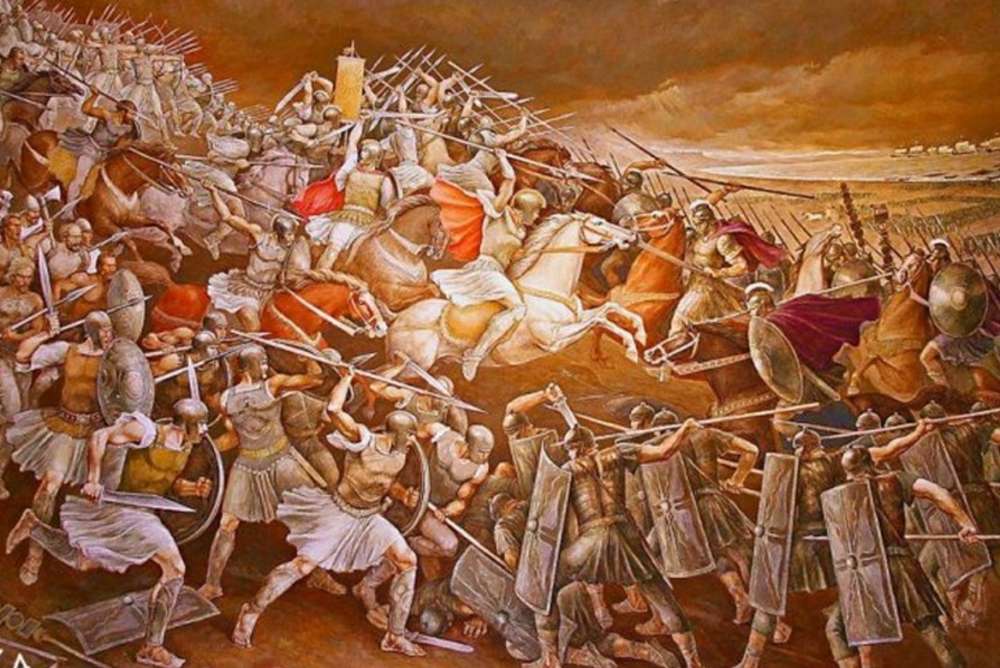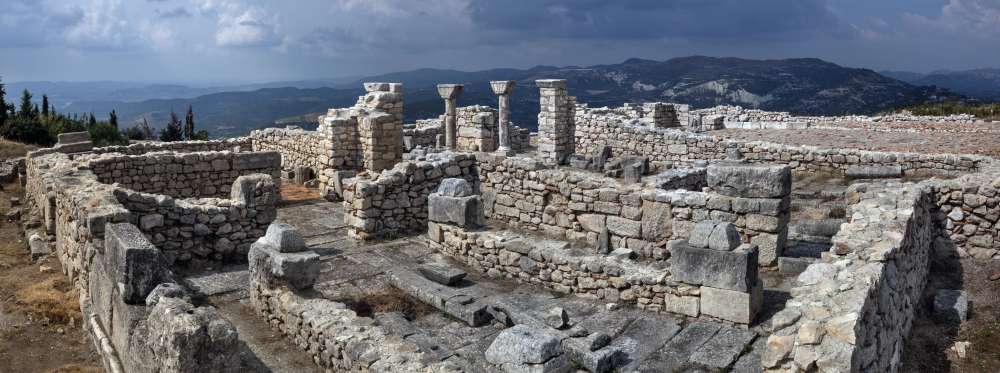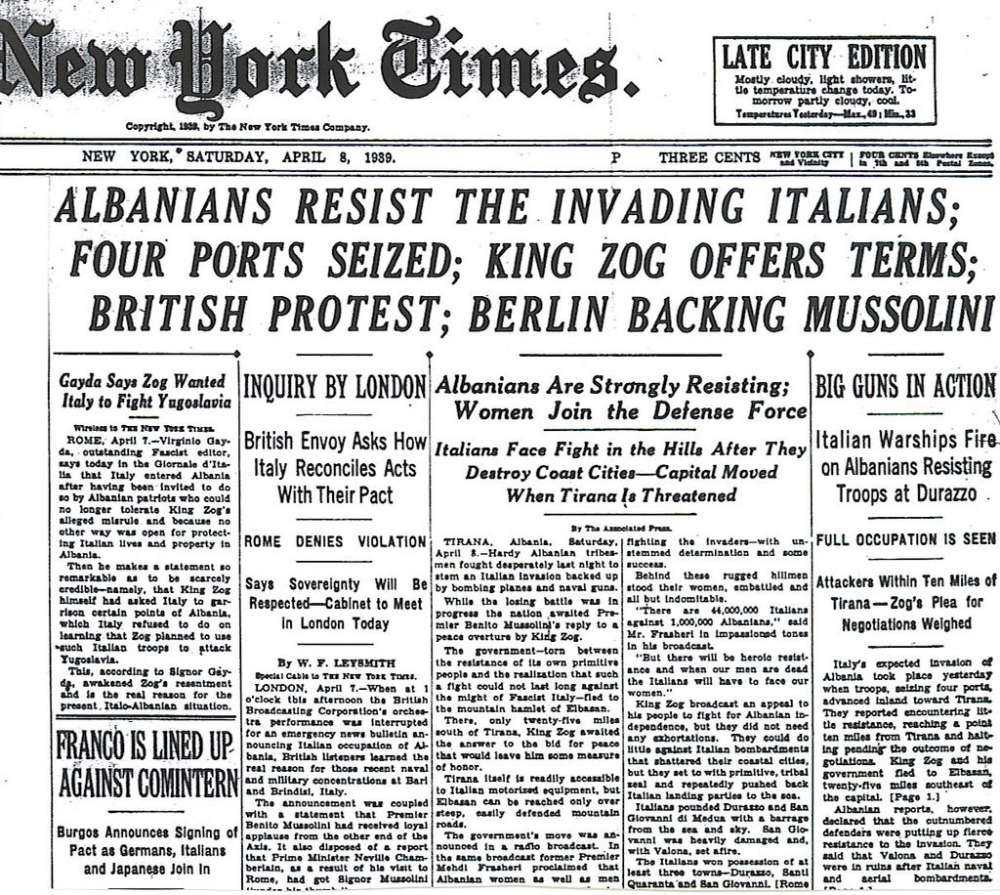A Brief Overview of the History of Albania
The genesis of every nation is its history. It’s the history that dates back to the beginnings of a nation’s existence, giving meaning to its identity and aspirations.
The Albanian nation doesn’t have a history filled with wars of conquest against other peoples, but the history of Albania testifies to the ancient traces of our people in the Southeastern European region, as an indigenous and hospitable population to those far from their own land.
Albania is considered one of the regions with the oldest population traces in the Balkans and Europe. Numerous archaeological findings in different parts of the Albanian regions, like those in Lepenica in Vlora, Tren in Korçë, Xara in Saranda, etc., attest to the ancient traces of population in the Albanian territory.
Studying these archaeological sites, it has been confirmed that the first Albanian settlements began to be inhabited in the middle of the Paleolithic period (100,000 to 40,000 years BC). Similarly, during the Neolithic period (6000 – 2600 BC), a much denser population is evidenced in the Albanian territories. This was observed in archaeological excavations in the Korçë area, where 12 settlements belonging to this period were found.
The Indo-European population settled here at the beginning of the third millennium BC. As a result of this union, a new population, the Pelasgians, was created on the Balkan Peninsula, which preserved specific cultural and linguistic characteristics.
This ancient population became the precursor to the Illyrians. After its fall in 30 BC, and at the end of the three Illyrian-Roman wars, Illyria fell under the control of the Roman Empire. After the division of the Roman Empire (395 AD), Illyria became part of the Byzantine Empire. Despite being under Roman conquest, the Illyrians maintained their language and traditions for centuries. The first Byzantine emperors (Anastasius I, Justin, and Justinian I) were of Illyrian origin.
The attacks of barbarian migrating tribes (Visigoths, Huns, Ostrogoths, and Slavs) continued during the 5th and 6th centuries. In 1344, Albania was under the rule of the Serbian Kingdom. After its fall in the war against Turkey in 1389, the principalities of Balsha, Topia, Muzaka, etc., were some of the most important Arbëresh principalities.
The peak of anti-Ottoman resistance was reached during 1443-1468, when the Albanian national hero Gjergj Kastriot Skanderbeg led the Albanian revolt against the Ottomans.
During this period, Arbëria became a key factor in all of Europe. After forming a coalition among Arbëresh principalities in the Historic League of Lezhë, held on March 2, 1444, National Hero Gjergj Kastrioti Skanderbeg led the resistance against the Ottoman threat for 25 years. The leader of the Arbër, Gjergj Kastrioti-Skanderbeg (1405-January 17, 1468) personifies an entire epoch of Albanian national history, their centuries-long struggle against the Ottoman invasion (end of the 14th century – beginning of the 16th century) to defend their land, wealth, and freedom. Under his leadership, the Albanian struggle reached a high and organized level, marking a decisive turn in the country’s political development and strengthening their national consciousness. After Skanderbeg’s death, Albania fell under the Ottoman Empire for nearly five centuries.
Albanian resistance continued in later periods, inspired by the Enlightenment movement of the Albanian National Renaissance, which emerged in the 19th century. The Albanian League of Prizren was suppressed by the Ottoman Empire in 1881. This league remained a symbol of Albanian awakening against Ottoman century-long occupation and national aspirations, which inspired efforts for national independence of the four Albanian vilayets.
Popular revolts and successive efforts culminated with the declaration of Albanian National Independence on November 28, 1912. The Assembly of Vlorë established the first Albanian government led by Ismail Qemali.
Shortly after the fall of the Ottomans by the Balkan alliance, the Conference of Ambassadors of the Great Powers (Germany, Russia, Austro-Hungary, France, and Italy) was called in London to decide on issues raised by the war in the Balkans. The conference agreed to create an independent Albanian state. However, in determining the borders of the new state, under strong pressures from Albania’s neighbors, the Great Powers did not fully recognize the demographic map of Albania and several important vilayets were handed over to neighbors. The Great Powers imposed on the new Albanian state, as a condition for its existence on the map of Europe, a German prince, Wilhelm von Wied (Wilhelm Wied). Wilhelm Wied arrived in Albania in March 1914 and left just six months later. During World War I, which broke out in 1914, Albania became a battlefield for various invading troops such as Austro-Hungarian, Italian, and French forces.
On January 28, 1920, the National Congress of Lushnja gathered in the city of Lushnja, aiming to preserve Albania’s territorial integrity after World War I and declared the consolidation of the foundations of the Albanian state by electing a new government led by Sulejman Delvina. The great efforts of the nation’s patriots, in December 1920, resulted in Albania’s admission to the “League of Nations,” which recognized Albania for the first time on the international arena as a self-determining state.
The Congress of Lushnja declared Tirana as the capital of Albania. In the early 1920s, Albanian society was divided between two opposing political groups. The first consisted of the class of beys and great pashas, large landowners, intellectuals educated abroad, initiators and main political and economic actors in the declaration of Albanian Independence. The second was comprised of progressive traders and politicians with democratic tendencies of the time, with a left political orientation. This group was led by Fan Noli, an Orthodox bishop educated in the United States. After a period of political turmoil in 1924, the country underwent a bourgeois democratic revolution, and thereafter, Fan Noli’s government took over the country’s leadership. Noli’s government was considered too left-wing and an experiment in Albanian politics, and after six months, it fell, and Ahmet Zogu was reinstated as Prime Minister of Albania. In 1928, the country was declared a Constitutional Monarchy under King Zog I.
The Albanian kingdom undertook significant reforms in establishing state authority, public order, and laid the foundations of the new educational system by opening primary and secondary schools. During the time of the Albanian kingdom, Albania gained stability and took bold steps in modernizing the country’s social life.
On April 7, 1939, the country was invaded by Mussolini’s fascist troops, ending the 11-year Albanian monarchy of Ahmet Zogu.
In 1943, the country was occupied by Hitler’s Nazi forces. The end of World War II and the capitulation of Nazi Germany brought
When communism fell across Eastern Europe in the late 1980s, Albania remained the last bastion of Stalinism in Europe. For about 50 years, the totalitarian regime followed an isolationist policy, leaving the country in economic poverty and completely isolated from the international community. The first act of the communist government was an unprecedented and uncompromising agrarian reform. This was followed by the collectivization of land, which then led to the massive impoverishment of the Albanian people. Its economic policy was based on the principle of “self-reliance.” During the time of the communist dictatorship, Albania was the only country in the world that had completely suppressed religious freedom. The fall of the “Berlin Wall” and the “Iron Curtain” brought wars for freedom and democracy to the peoples of Eastern Europe and the overthrow of totalitarian regimes. This pan-European movement in the east also influenced Albania, isolated from the world. After the mass emigration of Albanians in the summer of 1990 and the student revolt at the end of 1990, which demonstrated the Albanians’ aspiration to be free like the rest of Europe, in 1991, Albania finally emerged from isolation and has since held pluralistic elections.
Since 2009, Albania has been a full member of the NATO alliance and is undergoing a series of reforms aimed at integration into the European Union.
Albania’s Geostrategic Position as the “Gateway” between the West and the East
Albania’s geographical position has made it a site for significant passageways since antiquity, such as Via Egnatia, which, from the 2nd century BC, connected the two capitals of the Roman Empire, the eastern one (Byzantium) and the western one (Rome). Other important roads included Lissus – Naisus, or Lezha – Nish, and the Vjosa road that connected Apollonia with Larisa.
Geographically, Albania lies on the shores of the Mediterranean, regarded as the cradle of the birth and development of ancient European civilization. Its geographic proximity to civilizations of antiquity left its mark on human development in our lands. Indeed, these lands were a “hub of this civilization.”
Cultural and natural heritage are the reasons behind the progressively increasing tourist flow each year to archaeological sites, museums, and our historic and natural monuments.
Albania’s access to the Adriatic and Ionian Seas has enabled it to engage in international trade with neighboring countries, other Mediterranean countries, and beyond. Its presence at the crossroads of major trade routes between the East and West offers Albania broader economic communication with European countries.
Albania is blessed with 220 days of sunshine and a year-round tourism industry that has been steadily growing. Recently discovered, Albania is one of the enchanting Mediterranean coasts, aspiring to become an important part of the European and global tourism market and a full member of the European Union.
Albania has a surface area of 28,748 km² and a population of over 3 million inhabitants. It shares land borders with Montenegro to the northeast, Kosovo to the north and northeast, North Macedonia to the east, and Greece to the south and southeast. The Adriatic Sea separates Albania in the southwest from Greece, in the west from Italy, and in the northwest from Montenegro.





